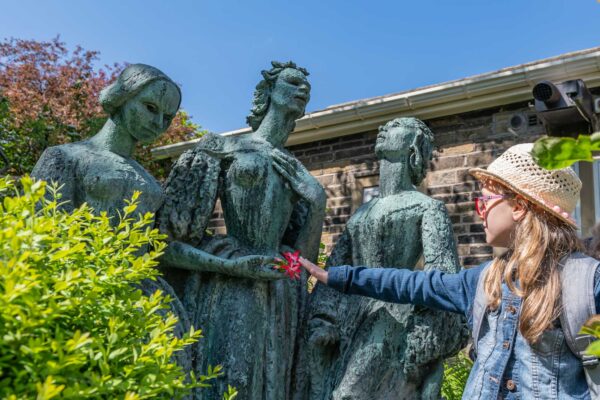
From the archives: the Brontës’ forgotten nursemaid
Before the novels that made the Brontë name famous, there was Nancy de Garrs – a 13-year-old Bradford girl whose life intersected with literary history.
Published: November 6, 2025
She’s not in the portraits. She doesn’t appear in the biographies. But Nancy was there – holding the Brontë babies, scrubbing floors, soothing nightmares and sheltering children from one of the most dramatic weather events in Yorkshire’s history.
The Bradford 2025 Local Stories for Learners activity pack brings Nancy’s story out of the shadows and into the classroom – inviting learners to explore the hidden labour of working-class women.
Born in 1803 in Bradford’s Westgate, Nancy de Garrs was one of twelve siblings. Like many girls from working-class families, she was sent to Bradford Industrial School to learn domestic skills. At 13, she was recommended to work for a local vicar named Patrick Brontë – and moved into the household as a nursemaid just as his daughters, including Charlotte and Emily, were being born.
Over eight years, Nancy lived and worked alongside the future authors – dressing them, caring for them, even taking part in their early imaginative games.
She was, in a very real sense, part of the Brontë childhood. But her name rarely appears in the stories we tell about them.
A dramatic rescue on the moor
One moment from Nancy’s life stands out. In 1824, during a walk with the younger Brontë children and her sister Sarah, the sky darkened. Thunder cracked. A bog burst from the hillside above Crow Hill, unleashing a flood of peat, mud and water.
Nancy acted fast. She led the children to safety, sheltering at Ponden Hall as the landslide roared through the valley behind them. The event left a deep mark on the local landscape – and potentially inspired scenes in the Brontës’ later writing.
Writer Kristina Diprose brings this moment vividly to life in The Shadow on the Moor, an original short story included in the pack, written in Nancy’s imagined voice.
From the Brontës to the Bradford Workhouse
Nancy’s life after the Brontës was filled with both resilience and tragedy. She became a dressmaker, married twice, lost children and husbands, and in her later years entered the Bradford Workhouse, where she died in poverty.
Her grave was unmarked for nearly 140 years – a stark reminder of how many working-class lives, particularly those of women, have been left out of the historical record.
Learning from lives like Nancy’s
The Behind the Brontës activity pack uses Nancy’s story to explore the invisibility of women’s labour, the nature of domestic service, and how local archives can help uncover hidden lives. It encourages learners to ask questions, build empathy, and reflect on whose voices get remembered – and why.
With resources developed in partnership with the Brontë Parsonage Museum, and artwork by illustrator Scarlett Bunting, the pack offers a powerful way to connect creative writing, history and place-based learning.

